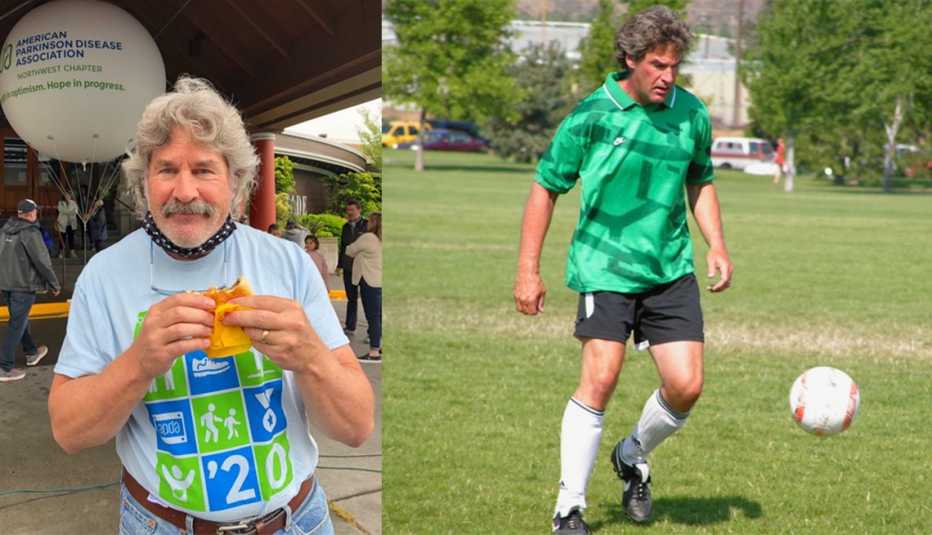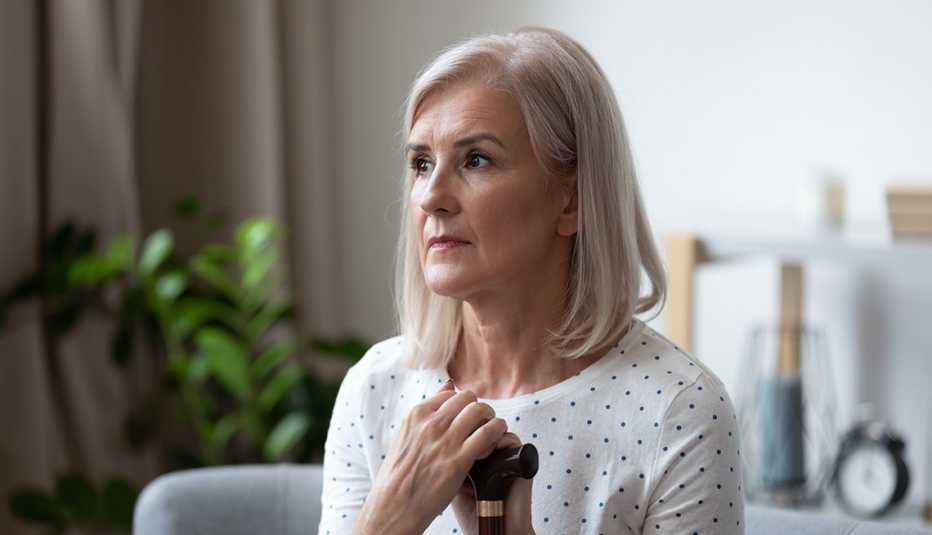AARP Hearing Center


Cathie Baker was 60 years old, heading west on the highway to her job in Seattle. As oldies played on the radio, her right hand, which was holding the wheel, suddenly jerked. Reflexively, Baker slowed down, worried she might lose control of the car in the middle of the morning rush.
The jolt, which ended as quickly as it came, caught her off guard. But she knew what it was.
“I remember thinking, I can’t believe this is happening,” says Baker, now 71.
Baker’s late father had Parkinson’s disease. He never saw a doctor to treat his illness, and his decline was painful to watch. “But I never thought I would get it. I never even thought about it — until I was driving and my hand started tremoring.”
A few days later, Baker had tremors in her right thumb. She went to her family doctor, who seemed not to take it seriously. “He kind of laughed and said, ‘Just because your dad had it doesn’t mean you have it,’” Baker recalls.
But she knew something was wrong. When she mentioned her symptoms later in a routine gynecology visit, the doctor went through a sheet of screening questions.
Baker answered yes to the ones about a shuffling gait, balance problems, constipation and sleep disturbances. So the doctor said she needed to see a neurologist. The neurologist confirmed Baker was in the early stages of Parkinson’s disease. More than 10 years later, Baker credits her consistent, intensive exercise routine for playing a big part in keeping her symptoms from worsening so far.


What is Parkinson’s disease?
Parkinson’s is a brain disease in which nerve cells, or neurons, in the brain die or become impaired. The damage progresses over time.
“For reasons we don’t entirely understand, certain brain cells begin to die off before they otherwise would,” says Jori Fleisher, M.D., a movement disorder specialist and an associate professor of neurological sciences at Rush University. “It’s different from normal aging.”
These cells predominantly affect areas of the brain that control movement and cause the telltale symptoms, such as the tremor in Baker’s hand.
There is no simple blood test or imaging to diagnose Parkinson’s. Researchers recently developed a spinal fluid test and a skin biopsy test, but neither is used commonly and neither changes the course of care. For now, doctors look for physical signs and ask questions about common symptoms. Tremor is a common early sign of Parkinson’s, although about 25 percent of patients don’t experience tremors. Doctors also look for slowed movements, muscle stiffness, posture or speech changes . They may ask about common symptoms that aren’t related to movement as well, such as sleep or mood changes, constipation, smell loss, low blood pressure and urinary problems.
What causes Parkinson’s disease?
Researchers haven’t completely figured out all that happens in the brain to cause Parkinson’s. But they know that affected brain cells accumulate too much of the protein alpha-synuclein. This clump of excess protein is called a Lewy body. The protein itself is normal and found in all healthy brains — usually at synapses, the connections between neurons.
“In Parkinson’s disease, for some reason, we think this protein goes awry,” says Rebecca Gilbert, M.D., a movement disorders specialist at NYC Health + Hospitals/Bellevue. It forms an aggregation that “sits in the cell and, we think, causes damage to that cell.” Much of the damage is in an area at the base of the brain called the substantia nigra, which makes dopamine, a chemical messenger that helps control muscle movements and is also involved in the body’s pleasure and reward centers. People with Parkinson’s also have low levels of other messengers, including serotonin and norepinephrine, which may explain some of the symptoms that aren’t related to movement, including mood changes and low blood pressure.







































































More From AARP
Living with Parkinson's: 3 Success Stories
Three people share their experiences of living with the disease — and its early symptoms
Fit & Fun Challenge
Learn more about how physical activity may support brain health at AARP® Staying Sharp®
How to Be a Caregiver for Someone Who Has Parkinson’s Disease
Experts share ways to support a loved one whose needs will change over timeRecommended for You